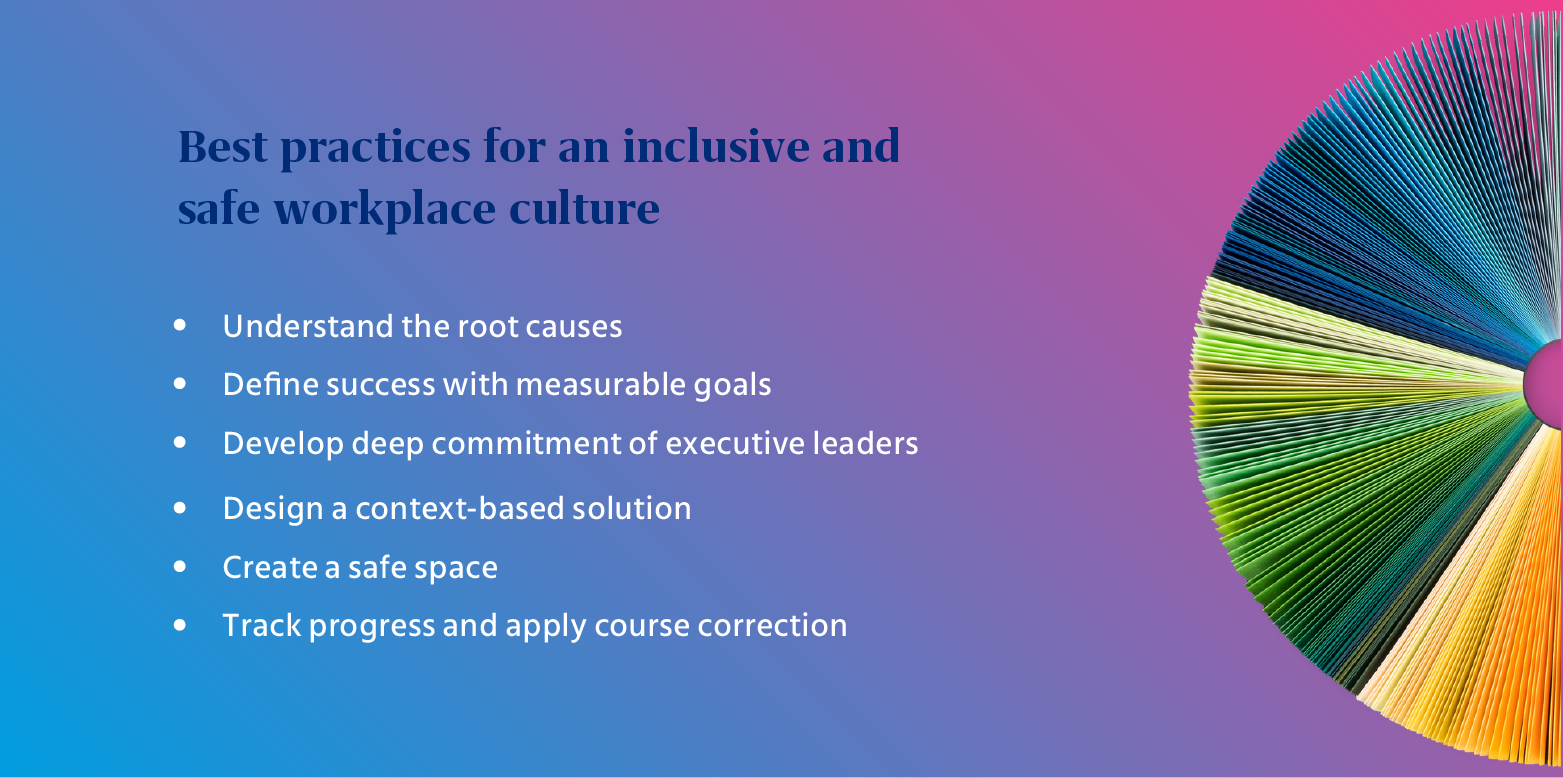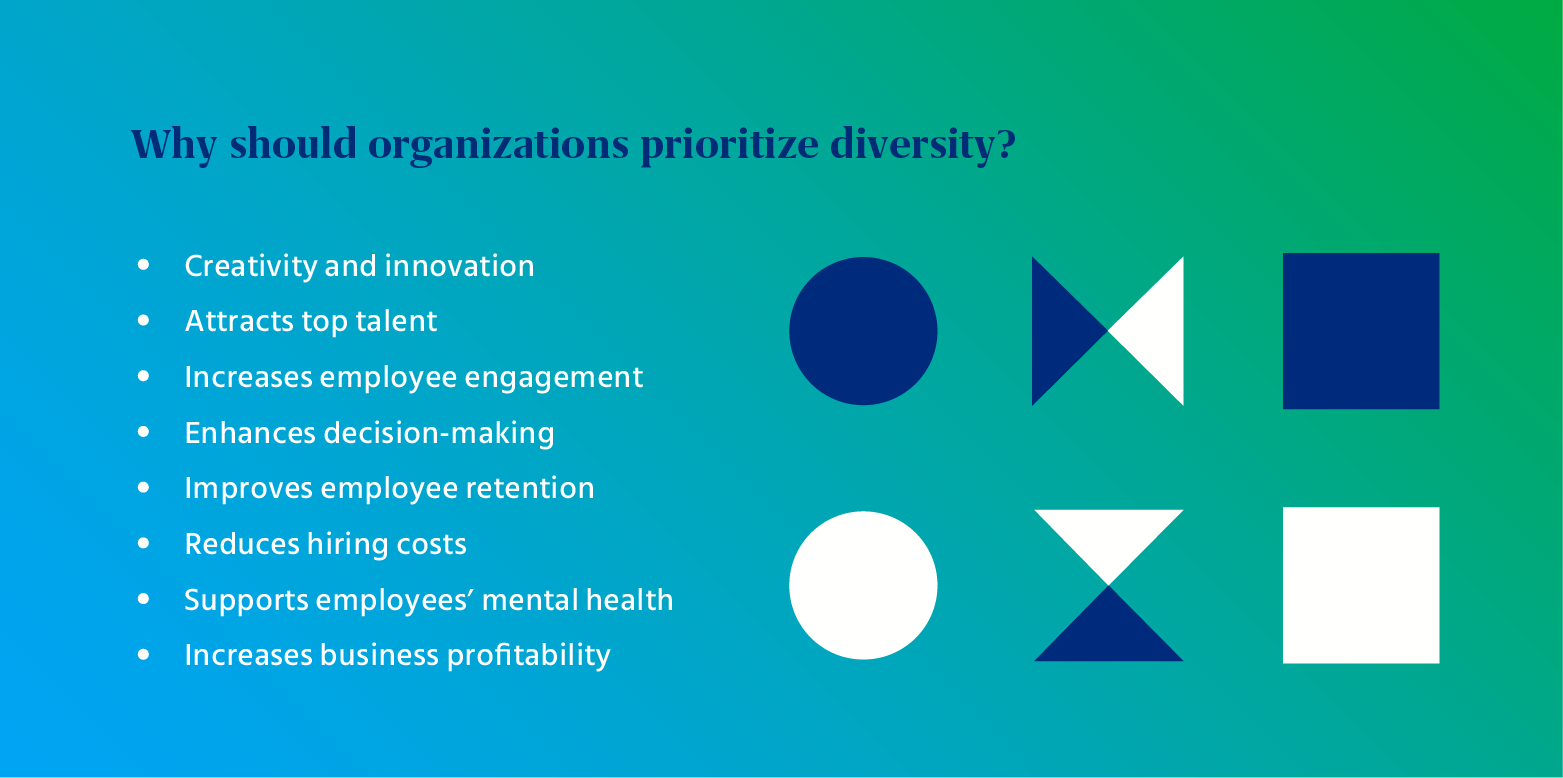The best practices for implementing DEI initiatives for success are:

1. Understand the root causes
The first step to promoting diversity and inclusion in the workplace is to understand challenges and their root causes. Interacting with employees and getting their feedback and opinions on what is important helps address diversity challenges.
- Organize a broad assessment with a companywide survey to understand the employee experience.
- Complete deep data analysis to identify problem areas and root causes.
- Continue to get feedback and input from the target population.
- Prioritize problem areas based on feasibility and urgency.
2. Define success with measurable goals
Improving organization-wide diversity and inclusion involves establishing an ongoing process with clearly defined measurable goals.
- Establish short-term and long-term goals.
- Create a cross-functional and diverse team that understands organizational needs and strengths.
- Clearly define organization-wide changes and inform employees of the purpose.
- Connect the changes to the end goal and organizational values.
- Encourage employees to understand what is in it for them and clearly define what to expect.
3. Develop deep commitment of executive leaders
Employees expect top leaders to be accountable for diversity initiatives and a supportive environment. Leaders are most likely to contribute to driving diversity and encouraging inclusion when they deeply understand how their behavior, biases, and values affect various stakeholders inside and outside the organization.
- Formally incorporate DEI goals into annual planning.
- Secure time and resources to drive such changes.
- Assume responsibility for outcomes.
- Check if inclusive leadership is being implemented at all levels.
- Self-assessments and multi-rater feedback can be used to gauge the level of inclusive leadership.
- Lead the desired change beginning with senior leaders and the CEO.
- Allocate sufficient budget, capabilities, and expertise to execute a diversity and inclusion plan.
- Establish a cross-functional team with experts and external partnerships to oversee this plan’s execution.
4. Design a context-based solution
With a concrete understanding of challenges and an execution plan, organizations must create impactful and context-based solutions. These changes must be easy to integrate into the day-to-day activities.
- Create scalable solutions to address the identified root causes.
- Integrate process changes to create a sustainable positive impact on the culture.
- Provide necessary tools for employees to be a part of the change.
- Encourage employees and hold them accountable for changes through necessary reskilling and upskilling for performance improvement.
5. Create a safe space
Employees should feel safe to discuss any discrimination that they have faced either personally or observed the same happen to others.
- Create a diversity and inclusion committee or community to handle DEI grievances.
- Ensure that the importance of DEI is cascaded top-down through training or regulation conversations on diversity initiated by the top leaders.
6. Track progress and apply course correction
Effective solutions are impactful only with continuous monitoring and tracking. Developing insights from such measures help organizations take corrective actions and increase the impact of diversity solutions.
- Define applicable diversity and inclusion KPIs with a clearly defined measurement strategy.
- Track metrics and milestones at regular intervals.
- Create scorecards to track progress toward higher-level aspiration.
- Monitor whether root causes are resolved.
- Measure outcomes and check those against goals.
- Collect both qualitative and quantitative data from the target population.
- Use the data to derive accurate insights and adjust the solution accordingly.









 Behavioral Competencies
Behavioral Competencies Cognitive Competencies
Cognitive Competencies Coding Competencies
Coding Competencies Domain Competencies
Domain Competencies



































Would you like to comment?